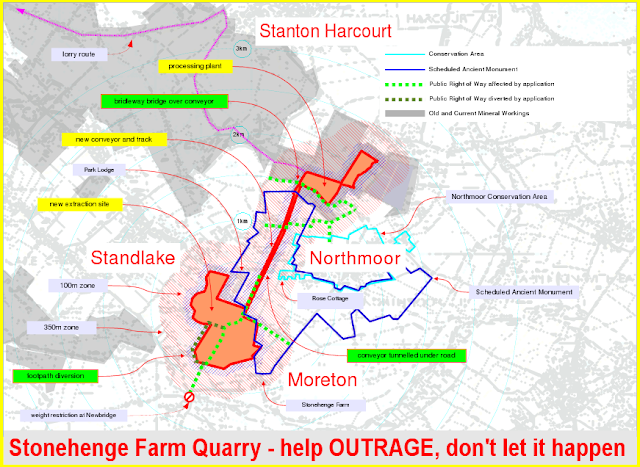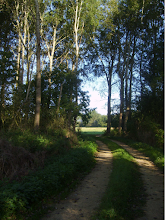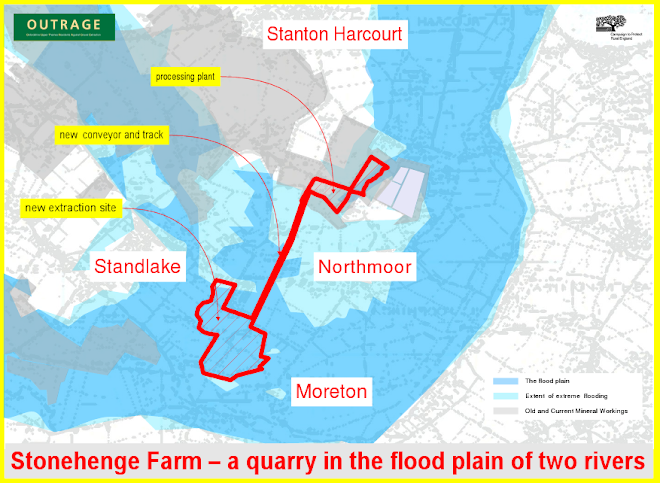It seems from various conversations that we have become so immersed in the gravel of the matter that we forget how obscure the whole question is for any normal human being. But OCC is consulting about ways of choosing quarry sites for the future, and, in the absence of any clear statement about their policy on amounts that need to be found, there is immense potential for anxiety and confusion. So here's an attempt to describe where we are:
Oxfordshire has the misfortune to possess large deposits of sand and gravel. Because the supply of sand and gravel is important to the construction industry, there are national policies to ensure that supplies are available. So decisions about gravel extraction here in Oxfordshire have always reflected national and regional guidelines and policies.
Oxfordshire has the misfortune to possess large deposits of sand and gravel. Because the supply of sand and gravel is important to the construction industry, there are national policies to ensure that supplies are available. So decisions about gravel extraction here in Oxfordshire have always reflected national and regional guidelines and policies.
Mineral Planning Authorities are required to have a 7-year 'landbank' of sites where extraction has been permitted. The amount of gravel that these sites should produce depends on national guidelines which say how much each region should aim to produce – the regional apportionment. So the size of the landbank and the way it is divided between counties within the region is extremely important to anyone who may be affected by gravel extraction.
On 19 March 2010 GOSE (the Government Office for the South East) proposed to increase Oxfordshire's share of the burden from 1.82 mtpa (million tonnes per annum) to 2.1 mtpa. Every other county in the South East had their share reduced. A further round of consultation was started. On 18 May 2010 OCC unanimously rejected this increase and put forward their own figure: 1.58 mtpa or less. But the new government put an end to the whole review process, so that the consultation responses that had by then been received were completely ignored.
On 6 July 2010 Eric Pickles, Secretary of State for Communities and Local Government, abolished the South East Plan. In advice that came with his announcement, his department explained in relation to minerals planning that planning authorities in the South East should work from the apportionment set out in the "Proposed Changes" to the revision of Policy M3, published on 19 March 2010. But in the next sentence they say that these authorities can choose to use alternative figures for their planning purposes if they have new or different information and a robust evidence base. It was policy M3 of the South East Plan that specified how much each county should aim to produce.
Eric Pickles presents these changes as part of a major shift towards “localism” - the transfer of power away from central and regional government to local planning authorities. The advice refers to new “freedoms”. So it is very strange if the effect is to impose from the centre a figure that comes from the old system and that OCC has already rejected.
But in fact his statement is very clear. Planning Authorities can choose to use alternative figures. So Oxfordshire should now declare that it does choose to set its own level. The consultation responses that were part of the aborted review process provide a mass of new evidence.
For many years, the landbank for Oxfordshire has been much higher than was actually needed. It has now been increased. OCC is just now consulting the community to help it decide where new quarries should in future be dug, But unless OCC first sets a sensible target, large areas will find themselves blighted, and planning decisions may be made that are based on invalid assumptions
So we urge OCC to declare and record on their website that they continue to reject the 2.1 mtpa landbank as excessive, that they will set a realistic landbank that is appropriate for Oxfordshire's needs and constraints, and that they will defend this decision with all the evidence that is available to them.
















